QuestionI am volunteering at local dog shelter, Joy; a 4-year-old mixed female, has been rejected from her second adoption. She is in general a mild dog; most of the time. She doesn't pull while walking, seldom bark, reacts well on sit and leave it commands during training. However, if she fixates on something (may it be a squirrel in a nearby forest), she will do all her might to get to it. She pulls, struggles excessively and tries to get out of her collar; which gets very dangerous. I could work with her in a fenced up condition, she is constantly distracted by any movements around. She doesn't care much about food treat, food lure to obedience cues progresses to nowhere. I have tried different treats (beef stick, liver sausage) in vain. I just don't have the luxury (time) to train her with toy and time is not on her side. Could you please help us out on this situation? Appreciate very much!
Regards,
Joan A Dog-lover
AnswerHi Joan,
Success in changing the behavior depends on the degree of drive. It could be a simple socialization and training process or a life-long management issue. Some dogs are so hard-wired and fixated that achieving a reliable level of self-control around furred or feathered things, especially furry running things, is such a challenge that even the most experienced and dedicated trainer would opt for management: never allowing the dog in a situation to practice such behavior.
It's easier to shape appropriate behavior than it is to change an established behavior. You may have heard it said that "once they taste blood" they will never be cured. The chase itself is extremely reinforcing. The dog enjoys an adrenalin high from the pursuit and success of capture is a jackpot which makes curbing the desire to chase difficult if not impossible in some dogs. Behaviors that are rewarding are more apt to be repeated. Unfortunately in the case of Joy, re-training a dog with a long reinforcement history will take dedication and time and monumental amounts of management.
You're rewarding for good behavior with tasty treats and praise, but what are you doing as a "correction"? Have you tried using a squirt bottle or water pistol on Joy the moment you see her noticing a squirrel (or whatever the stimulus is)?
While spraying say "NO!", and then reward through praise or a treat the moment she hesitates or looks away from stimulus.
After several days of just that, move closer to the stimulus until Joy begins exhibiting interest -- NOT close enough to trigger the response. Establish attention at that distance and begin rapidly reinforcing with high- value treats until the dog relaxes and "ignores" the stimulus.
Walk away, then repeat steps one and two, trying to move a little closer to the stimulus with each repetition. Each time, move only to the point that Joy begins to exhibit interest but not to the point that the stimulus triggers the inappropriate response.
It also might help if you walk her with a head harness such as a Gentle Leader, rather than a neck collar. It will give you a lot more control, though Joy will have to get used to wearing a head harness.
Another solution is to use a "no pull harness." These devices fit around the dog's body and around the forelegs so that when the dog forges ahead the forelegs and body can be controlled. Although these harnesses do not provide the level of control afforded by the head halter, compared to head halters, they require little or no training and do provide immediate control of pulling.
I hope I've been a help.
Best of luck,
Patti

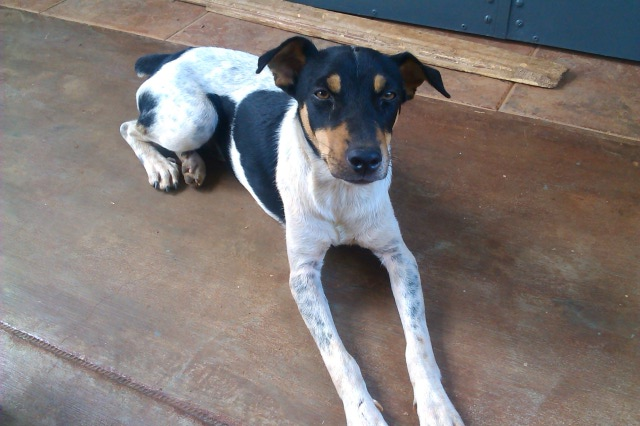 Dog breed confusion
Question
photo of Toby 1 photo of Toby 2
H
Dog breed confusion
Question
photo of Toby 1 photo of Toby 2
H
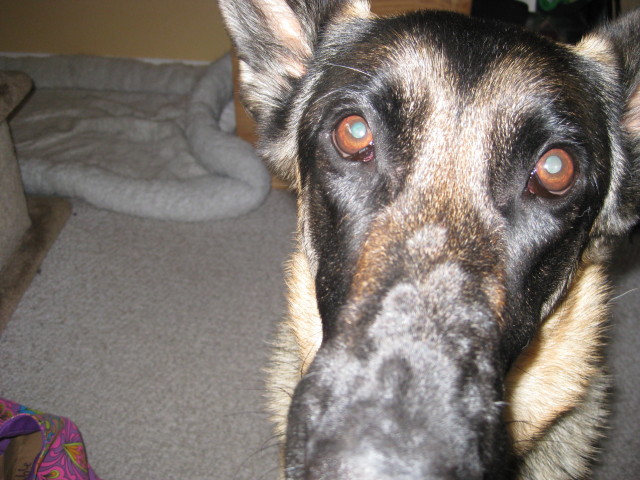 bumps on dogs nose
Question
bumps on nose
My dog has bumps on her nose..Sh
bumps on dogs nose
Question
bumps on nose
My dog has bumps on her nose..Sh
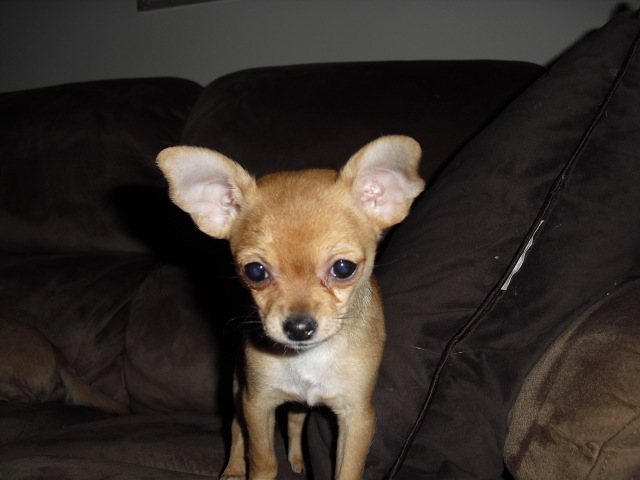 puppy chihuahua biting owner
Question
Cassey
Hello. I have a 6 month old femal
puppy chihuahua biting owner
Question
Cassey
Hello. I have a 6 month old femal
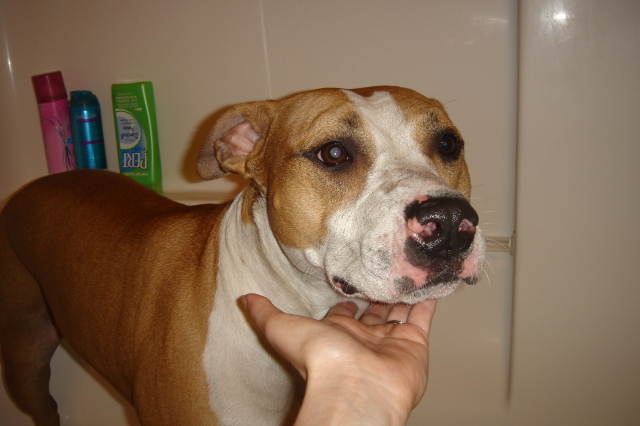 Dog breed?
QuestionQUESTION: Hi Nancy,
I am attaching an image of
Dog breed?
QuestionQUESTION: Hi Nancy,
I am attaching an image of
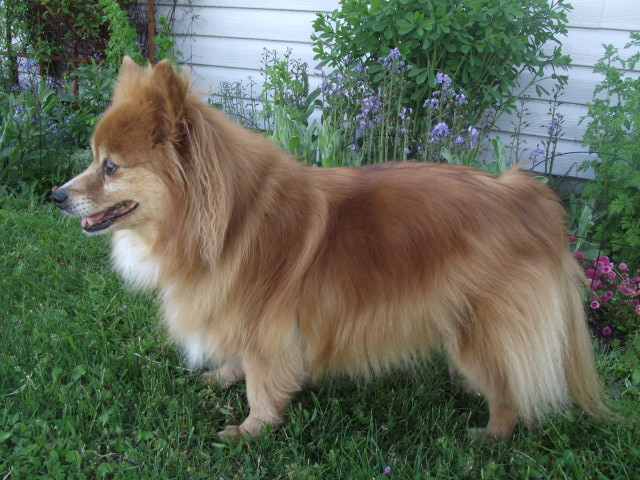 Shaving a Pomeranian
Question
Brandy my Pomeranian!
I have a few ques
Shaving a Pomeranian
Question
Brandy my Pomeranian!
I have a few ques